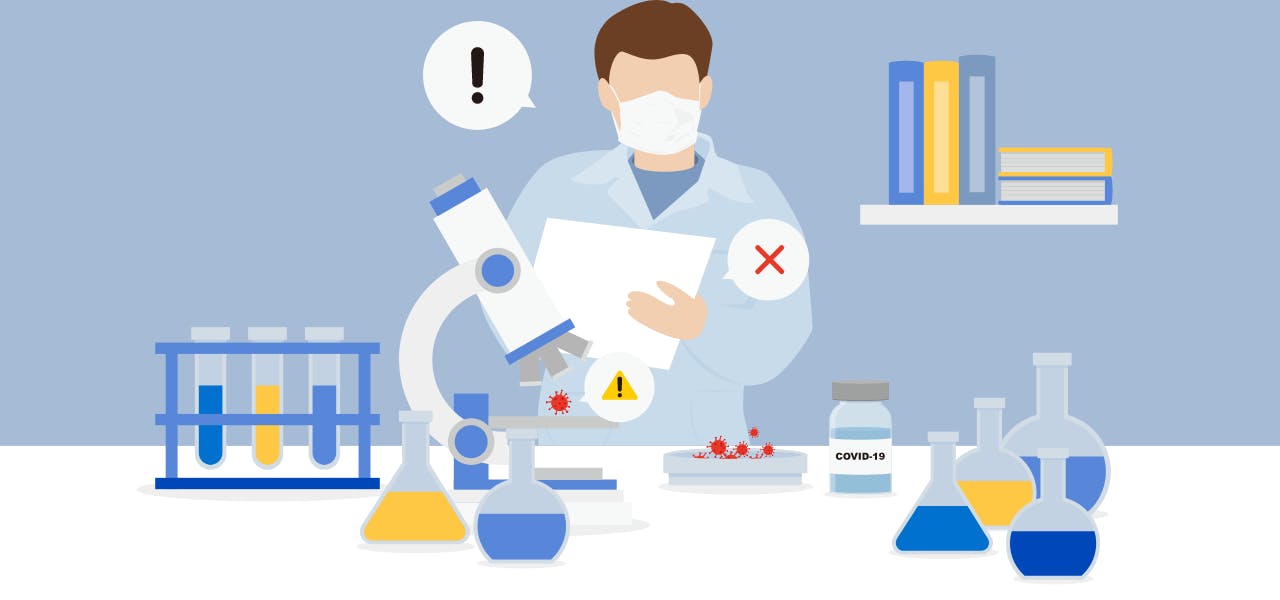The importance of neutrality in research has never been more evident as it has with the pandemic of COVID-19. With so many lives in danger and integration of healthcare and government politics coming together forcefully, it was crucial to be able to know that the statistics being used to make determinations on a national and international level were accurate and unbiased.
But false-positive research findings frequently showed up in studies of COVID, as well as in multiple other cases in the past. COVID was not the only time research outcomes were influenced by false-positives, but it was, by far, the loudest. The determinations of a wholly true research outcome depend on multiple factors, and today’s technology lets researchers complete artificial intelligence simulations through advanced computers that show the scary theory that there might be even more false-positive outcomes than we realize.
What are False-Positives?
Scientists are trained to search for the truth in all research, but their approach to data collection processes are flexible, relying on the scholar’s common sense and knowledge to determine the practices they use. This sets all research up to be potentially biased, according to the statistical hypothesis tests that determine the probability that data occurs by chance rather than systematic findings.
Between the flexible aspect of using the researcher’s knowledge to analyze the data they have and the scientist’s own preference for a particular outcome, there is ambiguity in research, no matter how much the intent is to be unbiased. The researcher is almost solely responsible for deciding the number of data points, the key terms to be searched, the types of variables that should be analyzed and reported, the controls that are used, and the factors that are included in the research report. These decisions that might seem minute and unnecessary to the final outcome could have a degree of control in the process and, no matter how tiny it is, could have an effect on the results of the experiment enough to cause it to read as a false-positive.
How Bias Encourages False-Positive Results
Bias is defined as a combination of factors that integrate together to produce a research finding that would not have been naturally created. These factors include things like design procedures, data collection methods, statistical and empirical analysis methods, and presentation decisions. Bias is not the same as chance, because chance outcomes are possible even when all of the factors are completely neutral. Bias is the manipulation of an outcome, whether consciously or subconsciously, resulting in false findings. The more instances of bias, the less likely an outcome are to be true. Reverse bias also occurs in which true findings are adjusted due to factors such as conflict of interest or inefficient data recovery. However, it’s more likely that false-positives due to measurement errors and overall inefficiency in an area are the reason for so many potential invalid outcome claims.
The Disastrous Consequences of Inaccurate Studies
The challenges of creating bias-free outcomes are common to all scientists. The biggest opportunity for bias to occur is during the interpretation of observations. During this time, our own beliefs, opinions, and experiences can shift how we view what is in front of us and what we use in our studies. Statistics help keep the focus on logical findings and to catch errors, but it’s still easy to choose what measures are used based on the preferred outcome.
Inaccurate studies based on false-positives have the potential to be disastrous. With COVID-19, for instance, false-positives resulted in significantly skewed results in some states that created government policies to shut down businesses, caused small business owners to go out of business, and made it difficult for healthcare workers and everyone on the frontline, including policymakers, to know how to move forward safely.
This one example of the disastrous consequences of false-positives and inaccurate studies has caused many researchers to second-guess how they are approaching their work. The need for science to be beyond reproach has never been more apparent, and the already high standards in academia have now been elevated further.
